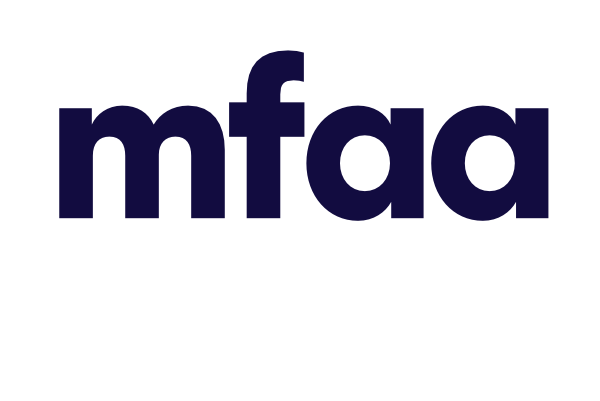

Insights from the MFAA National Equipment and Commercial Finance Forum
Private lending is fast emerging as a key component of Australia’s financial services landscape. The sector has been expanding rapidly, driven by dual waves of demand: SME borrowers in need of flexible, tailored funding solutions, and investors seeking diversification and attractive returns outside traditional asset classes.
In parallel, finance brokers are playing an increasingly critical role supporting their clients in accessing credit, especially as banks have tightened credit risk appetites in response to regulatory and economic pressures.
“Brokers are leveraging private lending solutions to address specific client needs, such as non-conforming loans or funding gaps for property transactions,” said MFAA CEO Anja Pannek.
“As traditional lenders pull back due to regulatory and economic pressures, demand for credit hasn’t gone away — and that’s where the flexibility of private lending is proving its value.”
However, growth in the private lending sector does come with complexity. Unlike traditional lenders, many private lenders operate under lighter regulatory frameworks, prompting ASIC to increase its scrutiny.
In February, the regulator released a discussion paper highlighting shifts in capital markets, including the rise of private credit. Further to this, ASIC announced last year that it had taken enforcement action against a private lender for circumventing the law, signalling its intention to pursue ongoing compliance and enforcement activity in this space.
In light of this, brokers should tread carefully, applying rigorous due diligence and ensuring any recommendations are suitable for their client.
Commercial lending through brokers is a growth sector
The role of mortgage brokers is also expanding beyond the residential sector. According to the MFAA Industry Intelligence Service (18th edition), the proportion of mortgage brokers writing commercial loans rose from 28.45% to 30.66% between October 2023 and March 2024. Over that same period, the number of mortgage brokers involved in commercial lending jumped by more than 15%, reaching 6,755.
The MFAA’s Value of Mortgage and Finance Broking 2025 report, prepared with Deloitte, found that 13% of brokers are now writing at least a quarter of their volume in commercial loans. Major aggregators have also reported year-on-year growth of over 20% in commercial broking volumes.
A rapidly expanding market
The Reserve Bank of Australia noted in its October 2024 report that private credit, while still small at just 2.5% of overall business lending, is growing faster than other forms of business debt. Although growth has slowed slightly in 2024 to just under 10%, it still outpaced broader business lending by two percentage points.
Flexibility and speed
Clare George, LMG Associate Director Commercial and MFAA National Equipment and Commercial Finance (ENCF) Forum member, said that the sector’s growth is filling a gap left by increasingly risk-averse banks.
“Following the GFC and the Banking Royal Commission, banks became subject to stricter capital adequacy requirements and more conservative lending practices,” George said.
“Private credit providers have stepped in, offering tailored loan structures, flexible repayment terms, and faster execution times.”
Understanding the differences
There is often confusion about the distinction between private and non-bank lending. Jean-Pierre Gortan, Managing Director of Simplicity Loans & Advisory and MFAA’s ENCF forum member, explained:
“Non-bank lenders are institutional in nature. They’re regulated, have formal credit policies, and often resemble banks in their operations. Private lenders, on the other hand, can range from high-net-worth individuals to boutique funds. They are less regulated, more nimble and often priced for risk. That flexibility is an advantage, but it demands more caution.”
George added: “Private lenders don’t always hold an Australian Credit Licence (ACL) and may not be bound by the National Consumer Credit Protection (NCCP) Act when the loan is structured as business credit. Brokers need to understand the true nature and purpose of the loan — not just the legal structure.”
Broker responsibilities and risks
With increased ASIC attention and a proliferation of private lenders in the market, the need for broker vigilance is clear.
“Do your due diligence, clearly understand what the lender is offering and whether it’s suitable for your client’s circumstances over the long term,” said Pannek.
George Obeid, President of the MFAA National Equipment and Commercial Finance Forum and Chief Third Party Officer at Judo Bank, echoed this message:
“Private credit plays a critical role in supporting Australian businesses and property sectors, but not all lenders operate to the same standards. We welcome the increased diligence ASIC is applying – it benefits everyone.”
Transparency and fair conduct remain a concern, says Gortan.
“We’re seeing issues like hidden fees, vague documentation, and questionable post-settlement behaviour,” Gortan said.
“This isn’t happening in the main. With growth accelerating in this sector; it’s about brokers being aware of things to watch out for so they and their clients can engage with confidence.”
What brokers must keep front of mind
Private lending presents real opportunity, but brokers must approach it with care. The MFAA National Equipment and Commercial Finance Forum recommends:
George concluded: “Education is key. Brokers must go beyond the surface, ask the right questions, and never assume a loan structured as business credit removes consumer protections. ASIC’s focus is increasing, and brokers should expect more oversight. The best way to prepare is to hold yourself to the highest standard.”




You can sign up for free by creating an account. If you are new to the portal, select "Create an account" to register and gain access to a range of free and useful resources.
If you already have an account, simply log in. Once logged in, you can easily apply for membership. If you need assistance, call our support team on 1300 554 817 for assistance.